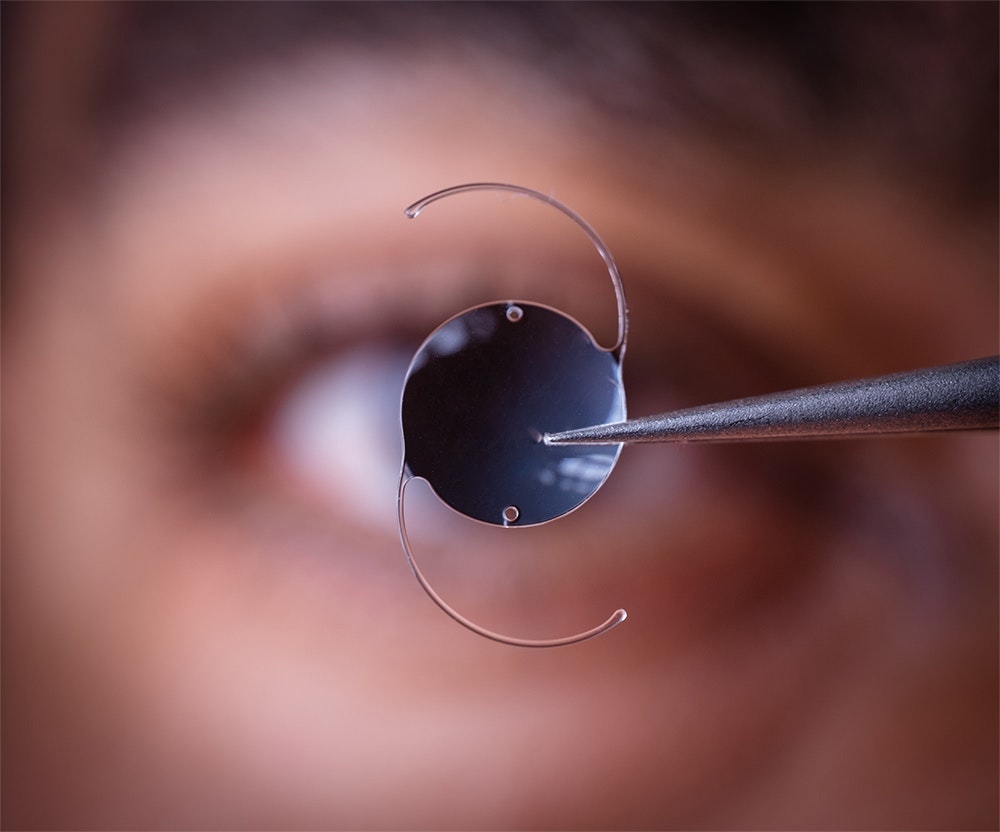Presbyopia
If you're over 40 years old and have noticed that your vision isn't as crisp as it used to be, you may be experiencing presbyopia. Monterey County Eye Associates offers different treatments that can restore your eyesight.
Learn how our offices in Monterey, CA, Salinas, CA, and King City, CA, can treat this age-related vision issue.
What Is Presbyopia?
Age-Related Farsightedness
Presbyopia is a form of hyperopia (farsightedness) that people develop after the age of 40. This condition makes it difficult to see objects that are up close, such as the text in books, newspapers, and on your phone, laptop, or tablet.
Hardening of the Lens
Presbyopia is caused by the gradual hardening of the lens of the eye. When the lens loses flexibility, it is unable to change shape and focus properly on nearby text, images, and other objects. This leads to blurry vision and the need for more light.
A Natural Part of Getting Older
Presbyopia is unavoidable. It's a natural part of the aging process and all people will experience it to some degree. Thankfully, there are many conservative and more advanced treatments available to improve the quality of your vision.
Premature Presbyopia
While presbyopia typically occurs around middle age, it is possible to develop the condition earlier in life. Risk factors for premature presbyopia include heart disease, diabetes, anemia, multiple sclerosis, and other medical conditions. Premature presbyopia is also associated with the use of alcohol and medications such as antidepressants, antipsychotics, and antihistamines.
Learn More About Presbyopia Contact Monterey County Eye Associates
While you may not be able to prevent the lenses of your eyes from hardening, there are many ways to restore your vision quality. The eye doctors at our ophthalmology offices in Monterey, CA, Salinas, CA and King City, CA, will work with you and determine the ideal treatment option for your needs.
During your consultation, we can discuss the advantages and disadvantages of various procedures so you can make an informed decision about your vision. We're here to answer all of your questions.
To schedule an appointment at Monterey County Eye Associates, contact our offices online. You can also schedule a visit to our practice by phone.
Call Us Today
(831) 424-1150

"I've been coming here for over 20 years and have always found Dr. Rosenblum to be caring, thorough and willing to explain fully any issues. He also seems very happy in his work and that puts me at ease." Michael Shaw
Can Presbyopia Be Corrected?
/
Yes. There are many options for presbyopia correction. Monterey County Eye Associates can help determine the ideal treatment for your needs.
Eyeglasses
Wearing glasses is one of the most conservative approaches to treating presbyopia. Individuals can wear their glasses to read material at a normal distance and allow them to sew and perform other kinds of close-up work. Additional lighting may still be required to do these tasks comfortably.
Prescription Contact Lenses
If bifocals and glasses don't appeal to you, it's also possible to treat presbyopia with contact lenses. Wearing contact lenses means you won't have to deal with clunky frames and you won't need to carry multiple pairs of glasses to experience clear, crisp vision.
Corneal Inlays
A corneal inlay is a small plastic ring that is surgically placed in the stroma, the thick middle layer of the cornea. With the inlay positioned, it can improve near vision. No corneal tissue is removed during the surgery and only one corneal inlay needs to be placed in the non-dominant eye. This is a potential option for presbyopia patients who have not undergone cataract surgery.
A Reversible Solution
One of the major benefits of corneal inlays is that the procedure is reversible. If you do not experience positive outcomes with the corneal inlay, it can be removed. We can then discuss other options for presbyopia correction that may have better results.
Lens Implants
For more advanced care, it is possible to remove the hardened natural lens of the eye and replace it with an artificial lens. This artificial lens is called an intraocular lens (IOL). There are many types of IOLs available and our team can work with you to determine the ideal artificial lens to address your vision needs. Patients may or may not require prescription glasses after getting an IOL.

Monovision Refractive Surgery
Monovision refractive surgery can reshape the corneas, allowing people with presbyopia to see clearly without the aid of glasses, bifocals, or trifocals. During the refractive surgery, the cornea in the non-dominant eye is corrected for near vision and the cornea of the dominant eye is corrected for distance vision. Before performing surgery, patients can get a sense of what monovision will be like by wearing monovision contact lenses.
"The practice is efficient, modern and convenient. Staff are helpful, concerned and professional. Dr. Rosenblum is very patient, knowledgeable and thorough. I highly recommend the practice for quality eye care."
Steve Ricks









